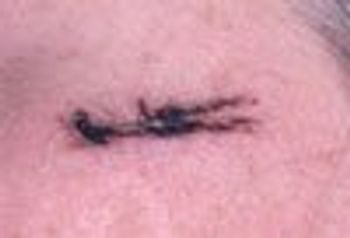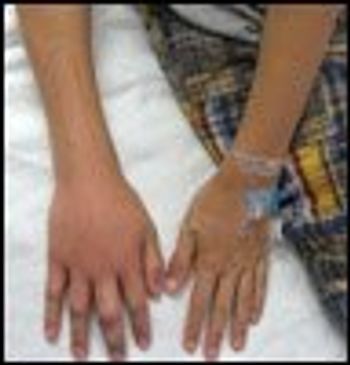
An 18-year-old boy presented with a several-month history of an intermittent, very pruritic rash on his back that did not improve with topical corticosteroids. Physical examination revealed grouped erythematous papules with a few scattered small vesicles on his posterior neck and bilateral posterior shoulders at the location where his backpack frequently rubbed.








